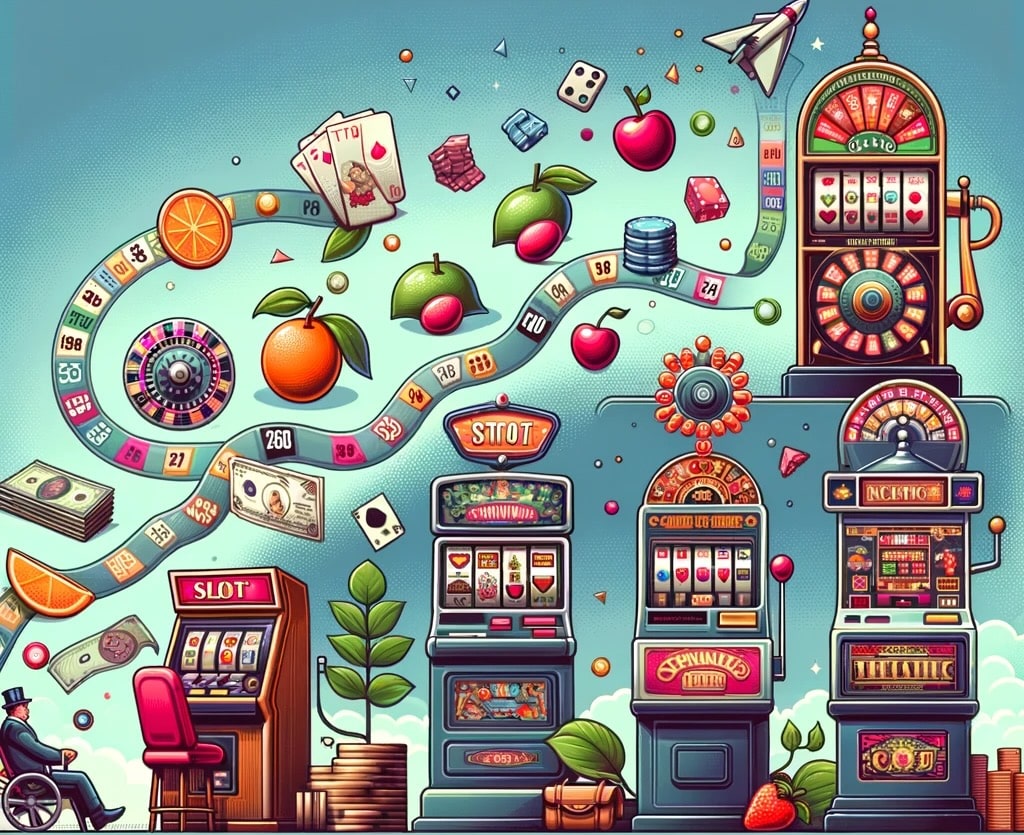The Evolution of Slot Machines: From Mechanical to Digital Mastery
The history of slot machines is a fascinating journey from simple mechanical devices to the sophisticated digital platforms that captivate millions today. Spanning over a century, this evolution reflects not just changes in technology but also shifts in cultural attitudes towards gambling and entertainment.
The Birth of Slot Machines
The story of slot machines begins in the late 19th century. In 1891, Sittman and Pitt of Brooklyn, New York, developed a gambling machine, considered by many as the precursor to the modern slot machine. However, it was Charles Fey’s invention in 1895, the Liberty Bell, that truly revolutionized gambling, offering a simpler and more exciting way to gamble. The Liberty Bell featured three spinning reels, a single payline, and symbols that have become iconic in slot gaming, such as horseshoes, diamonds, spades, hearts, and the Liberty Bell itself.
The Rise of Electromechanical Slots
The mechanical slot machine dominated the gambling world for several decades until the development of the first electromechanical slot machine in the 1960s. This innovation allowed for new features like multi-coin play and larger jackpots. Bally Technologies introduced the first electromechanical slot machine, Money Honey, in 1964, which offered automatic payouts of up to 500 coins without the help of an attendant.
The Digital Revolution
The advent of microprocessor technology in the 1970s and 1980s brought about the next major leap in the evolution of slot machines. This technology enabled the creation of video slots, which used a video screen to display the reels instead of mechanical drums. The first true video slot machine was developed in 1976 by Fortune Coin Co., which was later acquired by IGT, a name synonymous with innovation in slot machine development.
Video slots opened up a world of possibilities, including bonus rounds, free spins, and progressive jackpots, making slot games more exciting and engaging. The introduction of these features, along with the ability to bet on multiple lines and the inclusion of diverse themes and narratives, greatly expanded the appeal of slot machines.
The Internet Era
The mid-1990s saw the birth of the first online casinos, marking the beginning of a new era in gambling. Online slots quickly became a staple of internet gambling, allowing players to enjoy their favorite games from the comfort of their homes. The convenience, accessibility, and vast selection of online slots have made them incredibly popular among gamblers worldwide.
Today’s online slots feature advanced graphics, immersive sound effects, and interactive bonus rounds. Developers continue to push the boundaries of what’s possible, with innovations like virtual reality slots beginning to emerge, promising to offer even more engaging and realistic gaming experiences.
The Social and Mobile Revolution
The rise of social media and mobile technology has further transformed the slot machine landscape. Social slots, which are free to play and available on platforms like Facebook and mobile app stores, have introduced slot gaming to a new audience. These games often incorporate social features, allowing players to compete with friends or progress through levels together.
Mobile technology has also made real money online slots more accessible than ever. With mobile apps, players can enjoy their favorite slots anytime and anywhere, ensuring that the thrill of the slot machine is never more than a tap away.
Conclusion
The history of slot machines is a testament to human ingenuity and our love for entertainment. From the mechanical simplicity of the Liberty Bell to the digital sophistication of today’s online and mobile slots, these machines have continually evolved to meet the changing tastes and technologies of the times. As we look to the future, one thing is certain: the slot machine will continue to be a beloved form of entertainment for generations to come, ever adapting to the new horizons of technological advancements.

Garry Sputnim is a seasoned journalist and storyteller with over a decade of experience in the trenches of global news. With a keen eye for uncovering stories that resonate, Alex has reported from over 30 countries, bringing light to untold narratives and the human faces behind the headlines. Specializing in investigative journalism, Garry has a knack for technology and social justice issues, weaving compelling narratives that bridge tech and humanity. Outside the newsroom, Garry is an avid rock climber and podcast host, exploring stories of resilience and innovation.
















